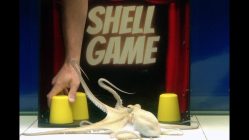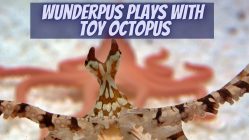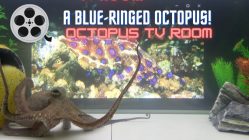Thaumoctopus Mimicus
Many are the octopus species that are fascinating thanks to their unique abilities and attributes. The Mimic Octopus, however, definitely belongs to the top five.
The Mimic Octopus is a recent discovery: it was initially spotted in Indonesia, off the coast of Sulawesi on a muddy substrate. Although its distribution extends to many parts of the Indo-Pacific Seas, most sightings have been recorded around Indonesia. This is probably the reason why the title of the video refers to the species as the Indonesian Mimic Octopus.
Ever since its discovery, octopus enthusiasts have been on the hunt for just a glimpse of this magnificent creature.
A Unique Impersonator
But what makes the Mimic so special?
The answer lies in the name itself. The Mimic Octopus is the only species known to this day to be able to alter its coloration and shape to mimic other animals that share its habitat.
As mentioned in the video, the Mimic Octopus not only alters its shape, but also its behavior in order to impersonate other sea creatures. It has been observed to be able to mimic as many 18 different sea creatures, including the jellyfish, sea snakes, flatfish, and lionfish.
The Mimic Octopus of this video is suddenly threatened by a large crab. Within tens of seconds it changes its color to a threatening black and billows to appear larger. The crab halts its attack, pauses to consider its chances, and soon retreats, leaving the octopus in peace.
Out In The Open
All octopuses face the gravest perils when hunting time begins. An octopus caught out in the open can not defend itself in the same way as when it is hidden in its den.
In order to survive, octopuses have developed various defense mechanisms, such as ink ejection, jet propulsion, and, finally, pure muscle.
Aside from those, the Mimic Octopus has an extra card up its sleeve. In the video, when it is time to move out in the open, this mimic octopus swims like a flounder. A predator would love the idea of octopus as lunch, but of flounder? Not so much…Probably too rigid a meal.
As for the lionfish (the shape and behavior of which our Mimic Octopus then imitates), it would probably be a predator’s last meal, provided, of course, that it was a real lionfish, and not just a cunning, shapeshifting Mimic Octopus.











